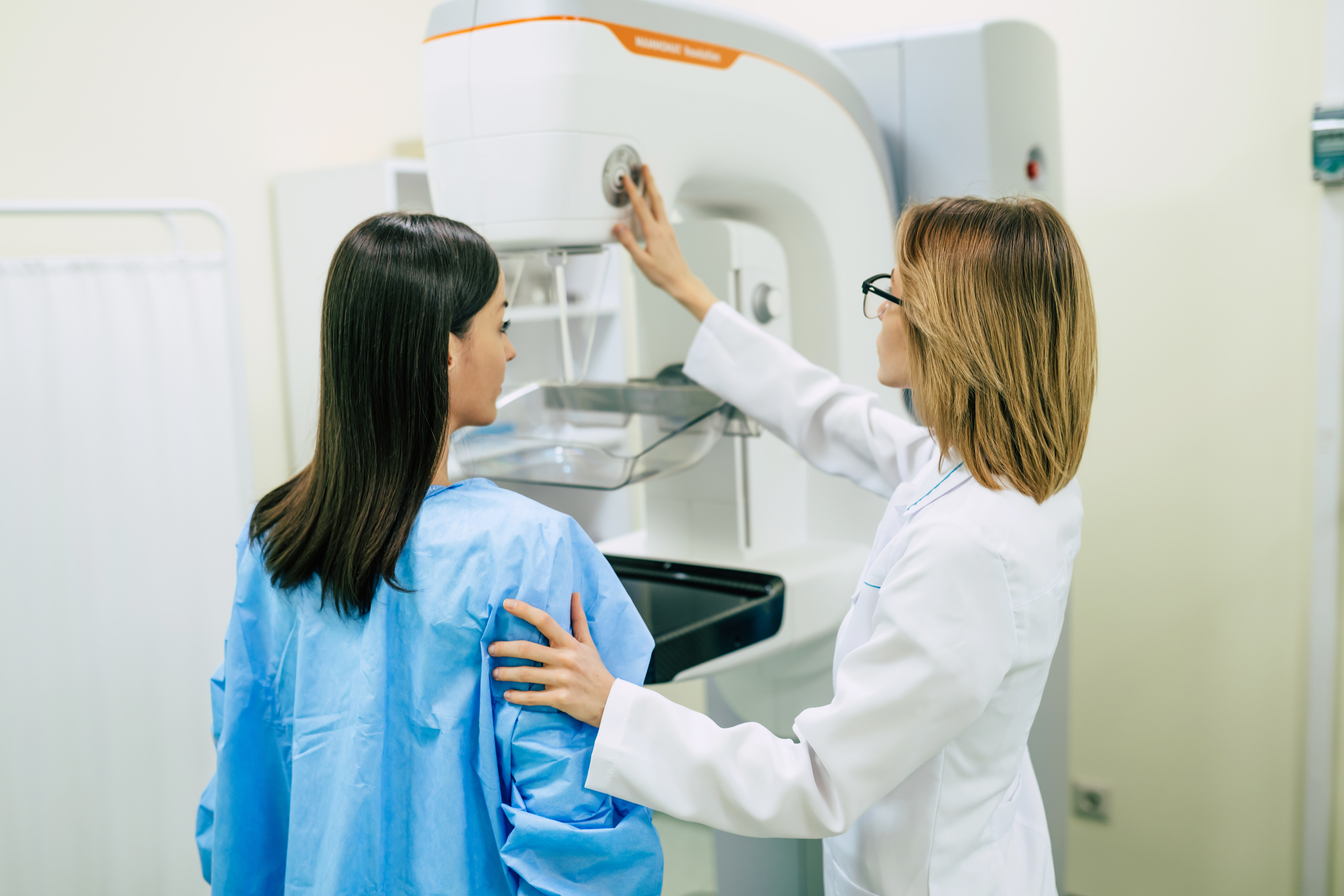“It’s just a cold sore… right?”
You feel that familiar tingle on your lip and hope it’s nothing—but deep down, you know what’s coming. Cold sores are often brushed off as a minor nuisance, but they’re actually caused by herpes simplex virus (HSV), the same virus responsible for genital herpes. And here’s the thing: if this is resonating with you so far, you’re far from alone. HSV is incredibly common, especially among women, yet it is surrounded by silence, stigma, and confusion.
In this article, we’re breaking down the facts—what HSV really is, how it spreads, what it looks like, and how to take charge of your health without fear or shame.
What is HSV?
You may have heard herpes simplex virus is one of the most common viral infections in the world. According to the World Health Organization (WHO), across the world, HSV-1 affects 3.7 billion people under the age of 50. You may have heard that it’s related to cold sores, or you may have heard it was a type of sexually transmitted infection (STI).
There are actually eight different types of herpes viruses that infect humans, but this article will focus on the two herpes simplex viruses: HSV-1 and HSV-2, both belonging to the same virus family [1]. Here’s what makes HSV unique: once you’re infected, the virus stays in your body permanently, living quietly in nerve cells most of the time.
There are actually eight different types of herpes viruses that infect humans, but this article will focus on the two herpes simplex viruses: HSV-1 and HSV-2, both belonging to the same virus family [1]. Here’s what makes HSV unique: once you’re infected, the virus stays in your body permanently, living quietly in nerve cells most of the time.
HSV-1 traditionally causes oral herpes (cold sores around the mouth), and is transmitted through oral contact and saliva. It can also cause genital herpes through oral sex.
HSV-2 primarily causes genital herpes and is usually transmitted through sexual contact.
HSV operates in cycles. Most of the time, it remains dormant in nerve cells near your spine. Occasionally, it becomes active and travels to the skin’s surface, potentially causing symptoms. Between outbreaks, the virus typically sheds at very low levels, making transmission less likely but still possible. Many people live with HSV without ever knowing they have it, while others experience manageable symptoms that often decrease over time.
How does HSV spread?
HSV spreads through skin-to-skin contact, including kissing, oral sex, vaginal sex, or anal sex. It doesn’t require penetration, and it can be spread even when there are no visible sores. Herpes can also be spread to a baby from an infected mother during vaginal delivery, or by a breastfeeding baby touching an active sore.
Because of the multiple ways HSV spreads, including saliva, children or young adults can be infected long before they become sexually active [2].
Who is at risk?
Anyone can contract herpes if they come into contact with the virus. In 2018, the CDC had estimated 48% of people aged 14-49 in the U.S. have HSV-1, and 12% have HSV-2. Many of them don’t know they’re infected because they’ve never had symptoms. Anyone who has intimate contact (even kissing) with a partner with HSV is at risk for getting the virus.
People with multiple sexual partners, especially if they aren’t using barrier protection consistently, are at higher risk—simply because each new partner increases the chance of exposure to HSV. Those who have sex at a younger age, or who don’t get regularly tested for STIs, are also at greater risk.
People with multiple sexual partners, especially if they aren’t using barrier protection consistently, are at higher risk—simply because each new partner increases the chance of exposure to HSV.
Women are more likely to contract genital herpes than men are, partly because the virus more easily enters the vaginal mucosa during sex, and thus transmission is more “efficient” from a male to a female. Additionally, female hormonal changes (like during menstruation or pregnancy) may trigger outbreaks or affect symptoms.
People who are immunocompromised (such as those with HIV) may be more prone to frequent or severe HSV outbreaks, and they may also shed the virus more often, making transmission to another person more likely.
HSV symptoms
One of the trickiest things about herpes is that many people never experience noticeable symptoms. In fact, most people with HSV don’t even know they have it—which is exactly how the virus continues to spread so easily. When symptoms do appear, they can vary in intensity and frequency depending on the person, the type of HSV, and whether it’s a first outbreak or a recurrence.
A first outbreak tends to be the most intense. It usually shows up within two to twelve days of exposure, and may start with itching, tingling, or burning in the area where the virus entered the body. This is soon followed by clusters of painful blisters or open sores, typically on or around the genitals, anus, buttocks, or thighs in the case of genital herpes, or on the lips and mouth with oral herpes. These sores may ooze or crust over before healing within a couple of weeks. Along with the sores, people may experience flu-like symptoms such as fever, swollen lymph nodes, headaches, and body aches—especially during a first outbreak of genital herpes.
After the initial infection, HSV lies dormant in the body’s nerve cells. For some, that’s the end of the story. For others, the virus reactivates from time to time, causing recurrent outbreaks [3]. These are usually much milder—often just one or two small sores—and may be preceded by a prodrome: a warning sensation of tingling, itching, or tenderness in the area before the sore even appears.
The frequency of these reactivations varies widely. Some people get them every few months, others once in a blue moon, and many not at all. Outbreaks can be triggered by stress, illness, fatigue, menstruation, or even sunlight (in the case of oral herpes). Over time, they tend to become less frequent and less severe as the immune system adjusts.
HSV treatment
Once you acquire HSV, you will have it for life—because the virus hides in your cells, there is no cure. Treatment of the virus can be grouped into episodic treatment of symptoms and chronic suppressive therapies [4].
Once you acquire HSV, you will have it for life—because the virus hides in your cells, there is no cure.
Oral herpes is usually treated first by topical antiviral creams—some can be purchased over-the-counter, like Abreva (docosanol), and others require a prescription. There are also antiviral medications you take by mouth, including acyclovir, valacyclovir, and famciclovir. All of these stop the virus from replicating in your cells. During an outbreak, you may also want to take a pain reliever medication like Tylenol (acetaminophen) or Advil (ibuprofen).
After the symptoms go away, many people can stop their medicines. Some people who tend to have recurrent outbreaks are recommended to continue taking medicine—called suppressive therapy. These treatments can decrease the risk of outbreaks and the risk of spreading herpes to someone else. Suppressive therapies can reduce the risk of spreading genital herpes by 70-80%, according to the Centers for Disease Control and Prevention (CDC).
HSV and pregnancy
HSV-1 and HSV-2 can be particularly problematic during pregnancy because of the risk of passing the virus to the baby. Women who get herpes for the first time in the third trimester have the greatest risk of transmission. Neonatal herpes can occur when the baby contracts herpes during vaginal delivery (coming into contact with sores, for example).
In this case, many doctors and the American College of Obstetrics and Gynecology (ACOG) recommend specific therapies (particularly antiviral oral medicines) to reduce the risk of shedding the virus and getting your baby sick. They may also recommend a C-section delivery—that way, there’s no risk the baby will come in contact with genital herpes sores.
After the baby is born, breastfeeding is generally safe as the virus is not passed on through breastmilk. However, if the baby comes in contact with any herpes sores (on the mouth, breast, or other parts of the skin), they could get infected.
Prevention
Herpes prevention isn’t always straightforward, mostly because HSV can spread even when no symptoms are present. Unlike some STIs, herpes doesn’t require ejaculation or penetration to pass from one person to another—it just needs skin-to-skin contact. That means avoiding transmission takes a little more intention and communication, but it’s absolutely doable.
Herpes prevention isn’t always straightforward, mostly because HSV can spread even when no symptoms are present.
Condoms can reduce the risk of herpes transmission during sexual contact, but they aren’t foolproof—since herpes can live on skin that isn’t covered by a condom. One of the most effective ways to prevent spreading HSV is to avoid sexual contact during an outbreak or when you feel that telltale tingling, itching, or burning that signals one may be coming. This is when the virus is most contagious.
Since HSV can be passed even when no symptoms are present, some people choose to go a step further and take daily antiviral medication—the suppressive therapy strategy. This approach reduces both the frequency of outbreaks and the likelihood of passing the virus to a sexual partner—even when you’re symptom-free
One of the most effective ways to reduce the risk of HSV transmission is to limit your number of sexual partners. This is even more effective when relationships are mutually monogamous and both partners have tested negative for STIs. Having one lifelong partner, or choosing to wait until marriage to have sex, significantly lowers the chance of encountering the virus in the first place. Remember that HSV is often spread by people who don’t know they have it, so even when someone seems healthy, they can still pass the virus to their partner. Building a relationship on trust, honesty, and mutual care—including conversations about sexual health—can be a powerful foundation not only for emotional well-being but also for physical protection.
Building a relationship on trust, honesty, and mutual care—including conversations about sexual health—can be a powerful foundation not only for emotional well-being but also for physical protection.
The bottom line
Herpes isn’t rare, dirty, or a moral failing—it’s a common, manageable virus that millions of people live with every day, often without symptoms. While there’s no cure, there are effective ways to reduce outbreaks, protect your partner, and live confidently with HSV.








Re: saying there is no way to eradicate Herpes, I’d suggest working with a skilled homeopath and also using a therapeutic grade Melissa essential oil (such as Young Living). It is a highly anti-viral essential oil. Know a guy who used Melissa oil topically (diluted with oil) and also several drops morning and night in a capsule, and after 4 months no longer tested positive for HSV-2 and no more external outbreaks/pain. Something to explore.